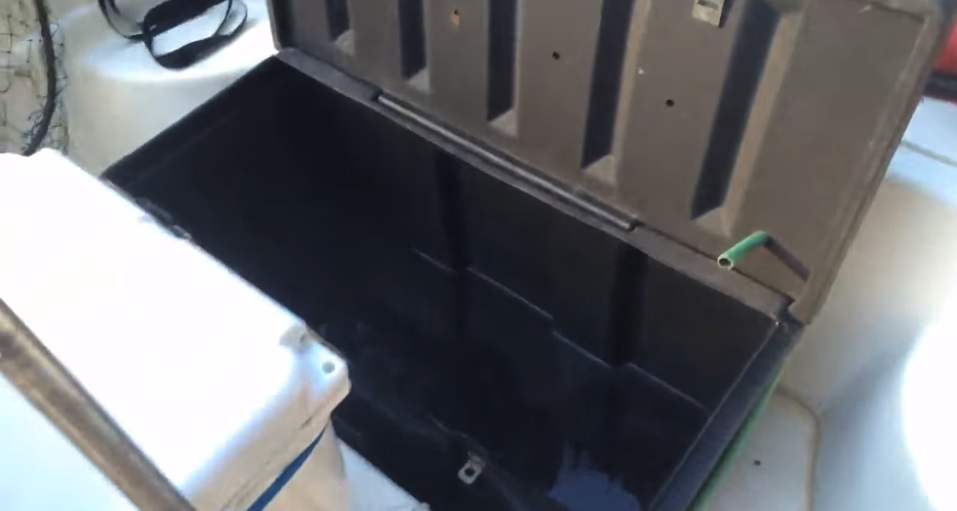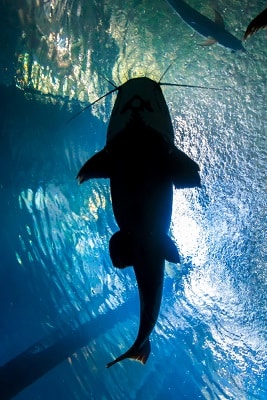
If you are interested in using live bait to lure catfish, you should be looking for a fishing boat with a livewell. The catfish livewells are tanks fitted on fishing boats; they can hold enough water to keep your bait alive until you need to use them. The livewells have been very helpful; anglers have been using these features in their fishing boats for many years.
Catfish Livewell
Livewells are also used by anglers to keep the catfish they catch alive until they return to land. However, the livewells for this purpose have remarkably larger tanks because of the full-grown catfish size. After catching the catfish, anglers quickly put them in the livewells to keep them alive.
There are homemade livewells and other models that have been manufactured for commercial sales. You can find suitable livewells online and place an order. Livewells are easy to use, they come with operational instructions to help you understand how the different features of the model you buy works. However, their functionalities are very similar.
Here are some of the features of a regular catfish livewell that will give you an idea of how it is used;
Aeration systems
The aeration systems in catfish livewells have been developed to supply enough oxygen into the tank. The consumption of oxygen varies among the different fish species. It is, therefore, a good idea to know about the fish you will be keeping in the livewell. The aeration system works with diffusers which introduce oxygen into the tanks. Some manufacturers of livewells specify the weight of fish that can survive in the livewell as a guide to all users.
Large Tanks
The live wells have large tanks; the livewells are designed to have enough space that can accommodate dozens of live bait. Considering that anglers who go catfishing spend many hours and sometimes days out at sea fishing, it is necessary that the livewells have enough space to contain all the baits needed to land many catfish.
Water recycling system
Livewells have a specially designed water recycling system that collects water from the river to replace the water that has been in the system for a while. The recycling process helps to improve the condition of the fish and give them a better chance of surviving in the livewell. The system functions with pumps which send and remove water from the tank.
Installation fixtures
Livewells may already have been preinstalled in fishing boats. However, you can buy these tanks and have them installed manually. The livewells have special fixtures that can be used to secure the tank to a part of your fishing boat. The fixtures are easy to use and durable. It is important to ensure the livewell is properly secured to avoid spills or damage to the piping system due to strong turbulence while you are sailing.
Waste removal system
Catfish livewells are also designed to remove waste such as ammonia from the tank. While the aeration system helps to maintain the proper conditions for fish to thrive, the waste removal system keeps the tank free from contaminants that can put the fish at risk.
You can also find portable livewells on sale. These portable designs can be detached from the connecting pipes in the fishing boat and carried away, into your car or to the market. Anglers who would like to sell their fish alive after catching them will find the portable livewells very helpful. On the other hand, the common designs are fixed to the fishing boat.
Related:

A good livewell has an aeration system. A great livewell has an oxygen injection system and uses 100% pure oxygen, not ambient air. Do you have any idea how much dissolved oxygen 75 lbs. of tournament blue cats require in any livewell on a hot July tournament night? And don’t forget to change the livewell water a few times to control dissolved CO2, acid livewell water, ammonia and other metabolic toxins that accumulate in livewell water.
And add a little salt to aid with osmoregulation and that about all there is to fish keeping in any livewell overnight.
Ain’t nothing to it.
Actually the # 1 problem water quality problem with any type mechanical aeration device and livewell Oxygenators and air vents is failure to provide continuous minimal safe O2 saturation during live transports, The age old problem with ambient air, aerators and water pumps is the air is always 79% nitrogen/21% oxygen regardless of how much you pump, a little or a lot. All other water quality parameters is easily controlled with periodic livewell water exchanges (dissolved CO2, acid water, ammonia, nitrites, feces and vomit).
The best educational publication/resource I have found on the internet that explains and resolves the low o2 (suffocation) livewell water quality problem (especially on summer nights) is here: oxyedge-chum.com
Enjoy the read and knowledge, Billy
We are using this livewell with the Oxygen Edge O2 system, no aeration. Great livewell, no aerator, no noise, no batteries, no ice, no chemicals, a fail-safe real turn on and forget livewell system with the pure O2 modification we did.
Summer hot August night tournaments: A couple partial water in exchanges in 8 hours controls metabolic toxins; acid water, ammonia and dissolved CO2 build-up, some granulated non-iodized granulated cattle feed salt, no ice to chill the water and that’s all there is to it…. a perfect turn on and forget livewell. We target big catfish and we tournament fish for $. A dead fish can be very expensive for us.